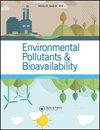甲苯-苯乙烯二次驯化提高生物滴滤器对苯乙烯的去除能力
Q3 Chemical Engineering
引用次数: 10
摘要
摘要以陶瓷颗粒为填料,在填料表面接种驯化污泥,建立生物滴滤器(BTF),净化含苯乙烯废气。采用甲苯-苯乙烯二次驯化的方法快速形成生物膜。结果表明,总启动时间为48天,苯乙烯的去除率达到95%。当入口加载速率为6.7–271.6 g/m3/h时,苯乙烯的RE较高时,获得的合适空床停留时间(EBRT)为57 s。pH和水分含量对苯乙烯去除的影响较小,表明BTF的操作是稳定的。生物量积累是正常的,短EBRT条件下的生物量增长速度快于长EBRT。本文章由计算机程序翻译,如有差异,请以英文原文为准。
Toluene-styrene secondary acclimation improved the styrene removal ability of biotrickling filter
Abstract In this work, ceramic pellets were used as packing material to establish a biotrickling filter (BTF) with acclimated sludge being inoculated on the surface of the packing to purify waste gas containing styrene. A method of toluene-styrene secondary acclimation was applied to achieve rapid formation of biological films. Results showed that the total time of start-up was 48 days and the removal efficiency (RE) of styrene reached up to 95%. The suitable empty bed residence time (EBRT) was obtained that is 57 s for higher RE of styrene with the inlet loading rates of 6.7–271.6 g/m3/h. The pH and moisture content showed small effect on styrene removal indicating that the operation of BTF was stable. Biomass accumulation was normal and its rising velocity under the condition of short EBRT was faster than that of long EBRT.
求助全文
通过发布文献求助,成功后即可免费获取论文全文。
去求助
来源期刊
CiteScore
1.62
自引率
0.00%
发文量
0
审稿时长
1 months
期刊介绍:
Chemical Speciation & Bioavailability ( CS&B) is a scholarly, peer-reviewed forum for insights on the chemical aspects of occurrence, distribution, transport, transformation, transfer, fate, and effects of substances in the environment and biota, and their impacts on the uptake of the substances by living organisms. Substances of interests include both beneficial and toxic ones, especially nutrients, heavy metals, persistent organic pollutants, and emerging contaminants, such as engineered nanomaterials, as well as pharmaceuticals and personal-care products as pollutants. It is the aim of this Journal to develop an international community of experienced colleagues to promote the research, discussion, review, and spread of information on chemical speciation and bioavailability, which is a topic of interest to researchers in many disciplines, including environmental, chemical, biological, food, medical, toxicology, and health sciences.
Key themes in the scope of the Journal include, but are not limited to, the following “6Ms”:
Methods for speciation analysis and the evaluation of bioavailability, especially the development, validation, and application of novel methods and techniques.
Media that sustain the processes of release, distribution, transformation, and transfer of chemical speciation; of particular interest are emerging contaminants, such as engineered nanomaterials, pharmaceuticals, and personal-care products.
Mobility of substance species in environment and biota, either spatially or temporally.
Matters that influence the chemical speciation and bioavailability, mainly environmentally relevant conditions.
Mechanisms that govern the transport, transformation, transfer, and fate of chemical speciation in the environment, and the biouptake of substances.
Models for the simulation of chemical speciation and bioavailability, and for the prediction of toxicity.
Chemical Speciation & Bioavailability is a fully open access journal. This means all submitted articles will, if accepted, be available for anyone to read, anywhere, at any time. immediately on publication. There are no charges for submission to this journal.

 求助内容:
求助内容: 应助结果提醒方式:
应助结果提醒方式:


